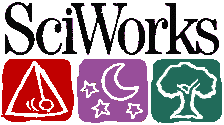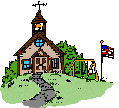ELECTRONIC TEXTBOOKS (Phase I)
In the Classroom and in the Field
(1996-1999)
Between 1996-1999, the Math/Science Nucleus
in conjunction with SciWorks (Winston-Salem, NC), St. Joseph School (Fremont,
CA), and Maloney School (Fremont, CA) explored the use of Pen Computing into the
classroom. We were trying to use computer technology
to increase productivity and learning by both teachers and students.
Throughout the years we have piloted different strategies in search of
methodology that works. All locations were provided with a LiveBoard (big
screen computer with pen computing).
We have learned that textbooks can become
"electronic." Technology had not yet matured to be a true
electronic component of a child's need. Laptops and notebooks were still
too heavy and unreliable in our study. Desktops could only be used in a
computer lab. Desktops were too large to be an integral part of a
classroom that taught content.
We concluded that technology could better
serve the teacher by providing electronic presentations. Technology needed
to mature to another phase (Electronic Textbooks, Phase II started in 2000). Electronic clients can assist students
in recording information in the classroom or in the field, but a hard copy
on paper still seems to imprint the most learning in our observation.
The Internet will become a valuable tool, if the commercial market creates
useful products.
The
teacher however, can greatly benefit from projection technology to present
material. Digital technology and ability to transfer to high speed
printer will also enhance a teacher's productivity. Below are the
sites that were used in the pilot and their status up to 2001.
 |
MATH/SCIENCE
NUCLEUS, Fremont, California
CONCLUSION: The training center at MS Nucleus developed
and tested computer generated templates (slideshows) and electronic textbooks
with ILS Corp. using thin clients. Most our material develop
is presently
available free on our website.
|
| Math/Science Nucleus is a non-profit (501(3)c), educational and research
organization composed of scientists, educators and community members. It
serves as a science resource center to assist school districts, teachers,
and administrators. A major goal Math/Science Nucleus is to increase the
science literacy of students in our school systems by enhancing the skills
of teachers and administrators. Improving their literacy will effectively
teach generations of children. Math/Science Nucleus was founded in Fremont,
California in 1982. |
|
SCIWORKS, Winston-Salem,
North Carolina
CONCLUSION: Technology was used to help teachers learn science
content. Schools had access to hands on materials through the
Museum. This was a National Science Foundation grant that continued the
program for 3 years. Now the hands-on materials are available for a fee
and templates on materials is still available free of charge on the Math/Science
Nucleus site.
|
 |
| The mission of SciWorks is to promote literacy, lifelong learning and
an appreciation of the sciences by providing innovative educational and
recreational experiences for all people through interactive programs and
exhibits, collections, an environmental park, and unique facilities. |
|
ST.
JOSEPH'S SCHOOL, Fremont, California
CONCLUSION: The LiveBoard was used by the science
teacher to use templates created by the Math/Science Nucleus. They use
booklets that were electronically created and updated. Program still
continues. |
 |
| St. Joseph is a First grade to Eighth Grade Catholic School. It is located
on the historic Mission San Jose area of Fremont. The school has 250 children.
In 1997-1998 they received A Blue Ribbon, Distinguished School award, which
they received in Washington D.C. from former President Clinton. |
 |
MALONEY
ELEMENTARY SCHOOL, Fremont, California
CONCLUSION: The presentation screen of the
LiveBoard is still being used in the computer lab. Although we
(Math/Science Nucleus) inserviced teachers several times, we could not get
them to use with their classroom preparation. So successful as a computer
demonstration of software, but not as a solution to help teachers with science
content. |
| Maloney Elementary School has 525 kindergarten to sixth graders. The
school has 19 Pentiums in their computer lab in which the LiveBoard has
been placed. This site will be used as a dual teaching tool for the students
of Maloney and as a training center for teachers in the district. |
|


